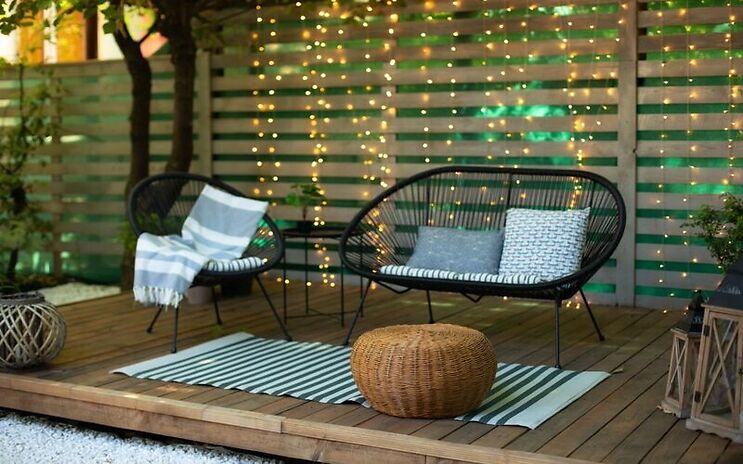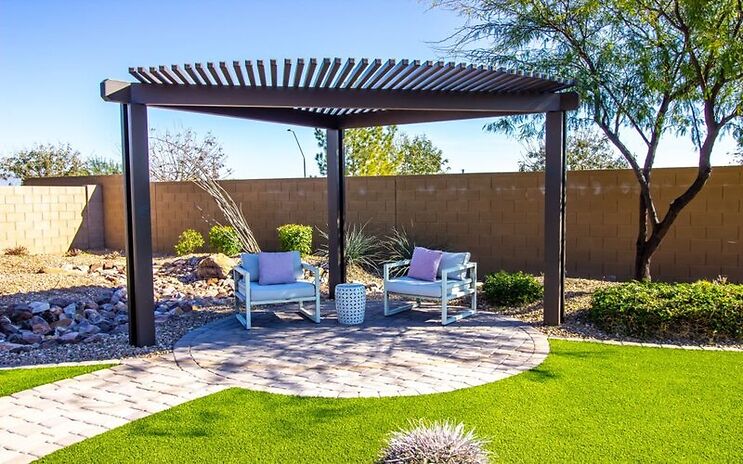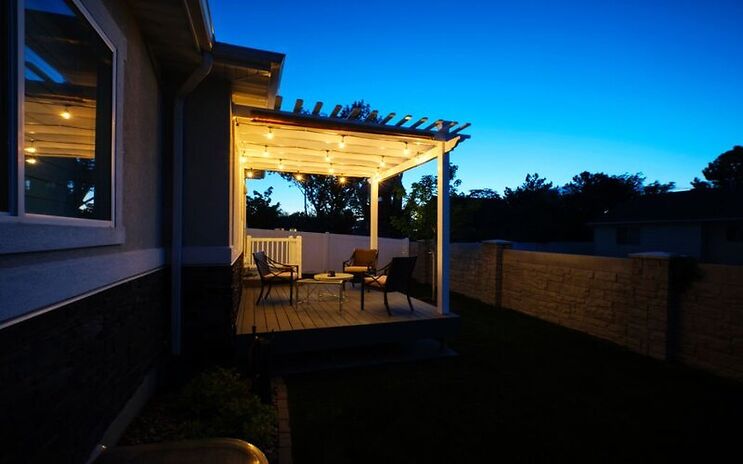What You Need To Know Before Building A Patio
Things you need to know before starting your next patio project

There are many reasons why you should build a patio. Maybe you love relaxing outside with friends and family. You may want to host parties or events outdoors. Whatever your reason may be, building a patio will add value to your home.
Once you’ve decided to build a patio, you need to figure out precisely what you want your patio to look like before you begin construction. This will help you plan and make sure you get everything done correctly.
We’ll go over all the details you need to know before you build your patio project, including choosing the perfect material, type, and size and deciding where to place your patio.
What is a patio?
A patio is a type of decking area commonly found outside homes. A patio is made of concrete or brick pavers and can be covered or opened depending on the weather. Some patios include built-in seating areas, fireplaces, and even pools. Patios are great places to relax outdoors, especially during the summer months.
They’re also perfect spots to host parties, cookouts, and barbecues. People love patios because they allow them to enjoy nature without going inside. There are many different patio styles available, from traditional to modern designs. Whether you prefer a rustic look or something sleek and contemporary, there’s sure to be a style that suits your home and lifestyle.
Material
There are many types of patio materials available for outdoor living spaces. Some common materials are made of concrete, others are wood, and others are metal. Here are some things to consider if you are considering building an outdoor kitchen.
Concrete Patios
Concrete patios are one of the most popular choices among homeowners. They come in various sizes and shapes, ranging from small decks to larger areas. Concrete patios are usually built using poured concrete, although some may use precast concrete.
Concrete patios are incredibly durable and weather resistant. They are low maintenance and can last for decades. In addition, they are inexpensive compared to other patio materials. However, concrete tends to crack after heavy rains. This problem can be mitigated by adding drainage holes to prevent water accumulation.
Wood Patios
Wood patios are another standard option for outdoor living spaces. They are typically constructed using cedar, redwood, or pine lumber. There are several advantages to choosing a wooden patio. First, it is attractive and adds value to your property. Second, it is relatively inexpensive. Third, it provides excellent insulation against heat and cold. Fourth, it lasts for years without requiring constant upkeep.
Wood patios provide excellent insulation against heat and coolness. They are affordable and add beauty to any yard. However, wood patios are susceptible to damage from insects and rot. They are also prone to cracking due to extreme temperature changes.
Metal Patios
Metal patios are becoming increasingly popular. This is because metal patios are sturdy and offer superior durability. They are also quite versatile. For example, they can be used indoors or outdoors. In addition, they can be installed over existing floors or ground surfaces.
Metal patios are highly durable and can withstand harsh weather conditions. They are also lightweight and portable. However, they are expensive. In addition, they are difficult to install and require professional installation services.
Access
When choosing patio doors, there are many factors to take into consideration. One of the most significant considerations is the type of glass you’d like to install. Two kinds of glass commonly used in patio doors are tempered glass and laminated glass. Tempered glass is much stronger than laminated glass, but it doesn’t look as nice. The laminated glass looks nicer, but tempered glass is less durable. Another significant consideration is the style of the door itself. Some entries are made of wood, others are made of metal, and others are made of vinyl.
Each material offers certain benefits and drawbacks. For example, wood tends to last much longer than vinyl, but it’s heavier and harder to maintain. On the other hand, vinyl is lightweight, easy to clean, and maintenance-free, but it endures only around ten years. Metal is generally the best option for durability, but it requires professional installation. A final consideration is the size of the opening. Small openings require smaller doors, while larger spaces require more significant entries. Depending on the size of the beginning, you may need to add hardware such as hinges or locks. The larger the opening, the more expensive the door will be. However, invest in a large door if you plan on using the space frequently.

Position
When choosing a patio position, you should consider the size of the space, the style of the house, and the amount of sunlight the area receives. There are many different styles of patios, ranging from traditional to modern. Traditional patios tend to be built around a central living room, whereas modern ones are designed to look like rooms within a home.
Modern patios are generally smaller than traditional patios, but they still require careful planning. A good rule of thumb is to keep the distance between the walls of the patio and the house to 10 feet or less. This ensures the sun doesn’t shine directly onto the house, causing damage.
Location
When choosing a patio location, you should consider factors such as sunlight exposure, privacy, and views. Sunlight exposure is significant since it affects both indoor and outdoor areas.
Privacy is another big issue that needs to be taken into account. People like to feel comfortable around others, and having a private space away from the rest of the house is essential. Views are also something to keep in mind. Some people prefer to look outside rather than inside, so having a view of nature or cityscapes can be beneficial.
Size
When selecting a patio size, there are many factors to consider. The most crucial factor is whether or not you plan to use the space often. If you’re planning to spend a lot of time outside, you should select a large patio. However, if you plan to use the area only occasionally, then you may be better off with a small patio.
Another consideration is whether you’d prefer a covered or uncovered patio. Covered patios protect against rain and snow, while uncovered patios allow sunlight to enter and heat the outdoor living space. Finally, it would help if you decided between a concrete slab or pavers. Concrete slabs are cheaper than pavers, but they require maintenance. Paver patios are more expensive but last longer and resist cracking and fading.
Type
There are many different factors to consider when choosing patio design. First, you should look at the size of the available space. For example, do you have room for a large patio table and chairs? Or do you only have room for a small patio table and two chairs? Next, you should consider the amount of sun exposure you receive.
Will you be spending much of your time outside during the summer months? Invest in a larger patio umbrella to protect yourself from direct sunlight. Finally, you should take into account the weather conditions in your area. If you live in a cold climate, opt for a fire pit or fireplace to keep warm. If you live in warmer temperatures, you may want a retractable awning to shield yourself from the heat or a freestanding patio. Whatever you decide, pick something that fits your needs perfectly.
FAQs
Does my patio contractor have to be licensed?
In Queensland, Australia, anyone installing or repairing concrete patios must be registered with the Building Authority. However, you can still install a patio if you are a professional landscaper. However, if you’re planning to hire a professional to install your patio, you should check with the authorities to ensure they’re qualified to do the job.
Do I need permits to build a patio?
Building a patio in Brisbane requires a permit. Building a patio without a permit could result in fines and possible jail time. However, building a patio doesn’t require any special permits. All you need is a building permit. Different kinds of permits are available depending on the project you’re working on. For example, some projects may require a demolition permit, while others may only require a potential building permit based on building codes. Check with your local government office to check building regulations and see what building requirements you need.
Do I need a patio railing?
A patio railing adds beauty and function to any outdoor space. Whether you’re planning to add a deck or a porch, a patio railing will give your home a finished look. There are many styles of patio rails, ranging from traditional wood to modern metal.
Some are made specifically for decks, while others are designed to fit around columns and arbors. Whatever style you choose, you should consider the size of your patio, the height of your deck, and the type of material you’d like to use. Here are some tips to keep in mind when choosing a patio railing.

Conclusion
In conclusion, building an outdoor patio is a fun project that will add value to your home and give you a place to enjoy the outdoors year-round. Whether you make a deck or install a retractable roof, you’ll find that building a patio is a rewarding experience. And if you’re looking to save money, you can use recycled materials to create a beautiful outdoor space with some extra features without breaking the bank.
